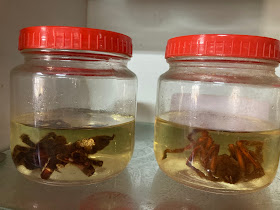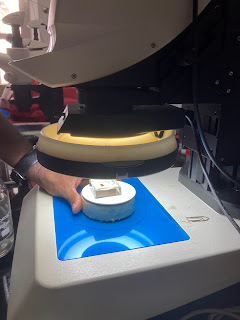In the previous article, we saw what science dissemination and scientific temper are and how they are related to each other. We also briefly dealt with how financial support from the government for scientific research is crucial and can lead to subsequent economic growth. In the last part we looked at the dissemination of science at the school or college level and how a person can contribute to the cause with some of the challenges mentioned.
There are some other important factors affecting the scientific dissemination and scientific temper in society to discuss, for example: government apathy, lack of participation of women - underprivileged community, inappropriate educational methods, errors in implementation etc. In this article we will look at the element of women in science.
Women make up half of India's (and the world's) total population. Although this ratio varies from state to state, one can say that as a general average, at least. At least in the twentieth century and earlier, the majority of scientists known to the world were men. That doesn't mean women didn't have the intellectual capacity necessary for scientific research, but you don't see their names in those ideals? Why?
If we wish to improve this perception, we need to bring more women in Science, Technology, Engineering and Mathematics (STEM) areas so that it becomes a usual scene to have significant woman participation in STEM jobs, conference and especially positions of power. This problem is multiferous, involving multiple aspects such traditional gender-specific roles, gender biased social rules, cultural practices, subconscious biases (of men and women) etc.
Historically, the right to education for women came very late, about one to two centuries ago in India and a little earlier than that in the west, but relatively recently. Therefore, the concept of female scientist does not come naturally to the public mind. That is, the characters we see as scientists in our movies, advertisements, and novels are mostly white-coat(lab apron)-wearing, bushy-haired, and occasionally eccentric "males". (with a few exceptions)
However, in the last century, women not only practiced science but also started contributing to the field of scientific research and some of them are recognized for their work such as: ________________(Fill in names of five female scientist here, can you?)
Anna Modyil Mani: This doodle by Google for Anna Mani, one of India's first women scientists, on her 104th birth anniversary. She was born in 1918 in Kerala. She was a physicist and meteorologist. She has also served as the former Deputy Director General of India Meteorological Department.
In the Indian context there are certainly women who have made invaluable contributions in the field of science.[1] On one side, Kamala Sohoni's struggle to get admission to the Indian Institute of Science (IISc) Bangalore [2] while on the other, a large number of women today earn doctorates in science and are seen working in science. This change is definitely welcoming.
In a common household, both boys and girls are given equal opportunities for education. At least among urban and middle class groups. In working class, low-income or rural and remote areas, the issue of education for most girls is still critical because their social status has not changed much. However, statistics show that even today there is no hindrance to the education of girls till class 10th. Eg : According to the 2011 census, the total literacy percentage in Maharashtra is about 83%, of which about 90% for males and about 75% for females. The overall literacy rate of India as a whole is approximately 74%, with males averaging 82% and females averaging 64%. The lowest total literacy is in Uttar Pradesh, Andhra Pradesh, Jharkhand and Bihar is 63-69% and in the same state women's literacy is 53-57%. Rajasthan has the lowest female literacy rate in the country at a little less than 53%. [3]
There is a huge disparity in the overall male-female literacy rate. Although it is diminishing with time, there is no doubt that it is still there. At every educational stage, primary, secondary, higher secondary, graduation and beyond; At each such stage the gap gets wider. The dropout rate of girls from the education stream also increases at a much faster rate than that of boys. There is no doubt that this education will be useful for girls to do independent jobs and businesses.[4] But girls' education and gender discrimination in education have an equally serious impact on the program of inculcating our scientific temper in the society.
The scientific temper is not just reading the science taught in the book and absorbing it or doing a technical project, but it is rational in believing or practicing anything in daily life. Besides, can it be proven with evidence on the tests of science? It is important to keep a clear conscience. It is also important to identify the gray area between common misconceptions - superstition and their scientific refutation.
As Mahatma Phule said that if a woman learns, a family becomes literate, the scientific approach of a woman helps to make a family's approach to life scientific. For example: Still in the Indian family system the women of the house are heavily involved in determining the customs and practices (from cooking to anything else) to be followed at home. Mothers and grandmothers, from such roles, in the upbringing of those children unknowingly inculcate the culture of what and how much to believe. So if the mother's attitude is scientific, it helps the children to become the same. In our daily life, whether it is health care, cleanliness in our surroundings, caste-gender discrimination and the resulting social discrimination in all these things, a person's perspective is created and influenced from home. Over time, the person's way of thinking may change, but it takes effort to make such a big change as to hear, understand, and change something against the strongly held belief in your mind, and basically you have to have the openness to accept ideological change. We originally defined our term scientific temper as "a disposition always ready to welcome new knowledge, new experiments, even if their results are contrary to our orthodox opinions and strong convictions."
Besides, when a new information is presented in the media or in a program for the dissemination of science, the aim is to make it accessible to all so that the newly learned knowledge can be known to people from all walks of life. The benefits of that information are manifold in their personal lives such as dispelling superstitions, preventing diseases, promoting technology with new knowledge, enabling people doing agriculture-industry, etc. to do it better. This is to make students interested in science and attracted to enter the field of research. By not giving importance to the participation of women there, we are about to deduct half of the society from the census.
Therefore, the scientific approach of women in the society, or their enlightenment is also an investment aimed at the future generation's scientific approach. But at such a time women being uneducated or less educated becomes a problem in many ways. Therefore, as stated in the conclusion of the first part, it becomes the responsibility of the so-called educated scientific community (both men and women) of the society to integrate them into the mainstream and thereby contribute to the country in terms of challenges arising from geographical barriers as well as social gender barriers.
-Dr. Vinayak Kamble
Member, Indian National Young Academy of Sciences (INYAS)
And
Assistant Professor, Department of Physics
Indian Institute of Science Education and Research (IISER) Thiruvananthapuram, Kerala
References and Notes:
1.Recommending books like “Lilavathi’s Daughters” edited by Rohini Godbole and Ram Ramaswamy on this subject. Although “Contribution of Women in Indian Science” is important information to the reader, it is not the subject of discussion at hand and hence the subject may be handled separately sometime in future and the subject of discussion for now is the factor of women in science dissemination”
2.https://indianexpress.com/article/explained/everyday-explainers/google-doodle-kamala-sohonie-cv-raman-8671266/
3.https://loksabhadocs.nic.in/Refinput/New_Reference_Notes/English/Girls%20Education%20in%20India.pdf
3. We see how many women are actually in jobs. Also if the world was so fair and neutral, every political and administrative position would have equally reflected the proportion of women. Unfortunately it is not so.



























